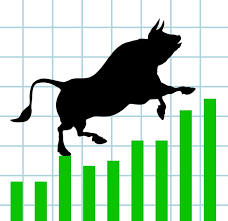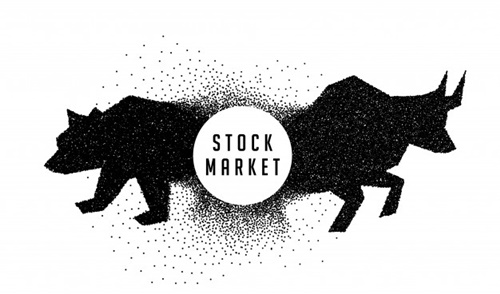What is a Bear Market?
A bear Market is when stock prices decreases (falls down) for an extended period. It refers to a situation where stocks' values fall 20% or more from recent highs. Individual commodities or securities can be considered in a bear market if they experience a 20% decline over a sustained period—typically two months or more.
Bear markets often are associated with a decline in an overall market or index like the S&P 500. Still, independent securities can also be considered in a bear market if they experience a 20% or more decline over a sustained period.

Bear markets may also occur with broader economic downturns, like a Recession. They can also be compared with bull markets that are heading upward.
Why is it Called a Bear Market?
The bear market got its name from how a bear hunts its prey by swiping its paws downward. Thus, markets with declining stock prices are referred to as bear markets.
Bear Market History and Details
In general, stock prices represent future expectations of cash flows and Earnings from businesses. Stock prices might fall if growth prospects fade and expectations are shattered. Long periods of weak asset prices can be caused by herd behaviour, anxiety, and a rush to protect against adverse losses. A bear market can be caused by various events, including a poor, lagging or sluggish Economy, wars, pandemics, geopolitical crises, and significant economic paradigm shifts, such as changing to an internet economy.
Low employment, weak productivity, low discretionary Income, and reduced corporate incomes are symptoms of a weak economy. Moreover, any government interference in the economy can also set off a bear market.
Furthermore, changes in the Tax Rate can cause a bear market too. The list also includes a loss in investors' confidence. Investors will take action if they fear something terrible is about to happen, in this case, selling shares to avoid losses.
Talk to our investment specialist
Bull and Bear Market in India
A bull market occurs when the economy is expanding, and most equities are increasing in value, while a bear market occurs when the economy is contracting, and most stocks lose value.
Example of a bull and bear market in India:
- India's Bombay Stock Exchange Index saw a bull market from April 2003 to January 2008, climbing from 2,900 to 21,000 points
- Bear markets in India include the crashes in the stock market of 1992 and 1994, 2000's dot-com crash and the 2008 financial slump
Phases of a Bear Market
Bear markets typically go through four stages.
- High pricing and positive investor optimism characterise the first phase. Investors start exiting the markets and grab profits at the end of this phase
- In the 2nd phase, stock prices start to fall significantly, trading activity and corporate profits decline, and previously optimistic economic indicators deteriorate
- Speculators begin to enter the market in the third phase, causing some prices and trading volume to rise
- Stock prices continue to fall in the fourth and final phase but slowly. Bear markets give way to bull markets as low prices and optimistic news re-attract investors
Bear Market's Short Selling
Short selling allows investors to profit in a lousy market. This strategy entails selling borrowed stocks and buying them at a lower price. It's a high-risk trade that might result in significant losses if it doesn't pan out well.
Before placing a short sell order, a seller must borrow the shares from a broker. The value at which the shares are sold and at which they are bought back referred to as "covered," is a short seller's profit and loss amount.
Bear Market Example
The average of the Dow Jones Industry went into a bear market on 11 March 2020, while the S&P 500 went into a bear market on 12 March 2020. This came after the index's biggest bull market in history, which started in March 2009.
The outbreak of the COVID-19 pandemic, which brought mass lockdowns and the prospect of diminished consumer demand, drove stocks lower. The Dow Jones plummeted quickly from all-time highs above 30,000 to lows below 19,000 in a couple of weeks. The S&P 500 fell 34% from 19 February to 23 March.
Other examples include the aftermath of the dot com bubble burst in March 2000, which wiped off almost 49% of the S&P 500's value and lasted until October 2002. The Great Depression began on October 28-29, 1929, with the stock market collapse.
Conclusion
Bear markets might span several years or only a few weeks. A secular bear market can last from ten to twenty years and is defined by consistently low returns. In secular bad markets, there are rallies in which stocks or indexes rise for a time; however, the gains are not sustained, and prices retreat to lower levels. In contrast, a cyclical bear market might run anywhere from a few weeks to many months.
All efforts have been made to ensure the information provided here is accurate. However, no guarantees are made regarding correctness of data. Please verify with scheme information document before making any investment.











